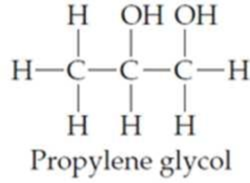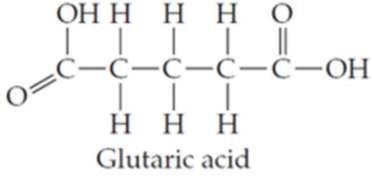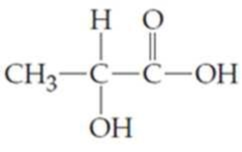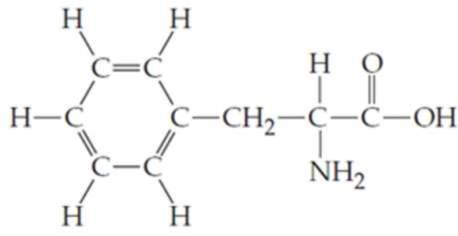
EBK FUNDAMENTALS OF GENERAL, ORGANIC, A
8th Edition
ISBN: 8220102895805
Author: Peterson
Publisher: PEARSON
expand_more
expand_more
format_list_bulleted
Textbook Question
Chapter 12.4, Problem 12.8P
Draw both condensed and line structures for the chemicals listed in Problem 12.1.




Expert Solution & Answer
Want to see the full answer?
Check out a sample textbook solution
Students have asked these similar questions
Here is my literature Beta Carotene HPLC analysis graph.
Can you help me explain what each peak is at each retention time?
Thank You :D
I have a literature B-Carotene HPLC graph in which showcases a retention time of roughly 23.6 and 25.1.
Please help me compare my two different Anti-Oxidant Juice graphs. (Attached)
The juices provided are: V8 Carrot Ginger Blend and V8 Original Blend
Noticing the HPLC graphs I saw no peaks for the Original Blend for B-Carotene.
However the Carrot Ginger Blend showed similar peaks --> Why is this reason?
Please explain in terms of Retention time and Area (Under Curve).
Thank You!
Calculate pH of a solution prepared by dissolving 1.60g of sodium acetate, in 88.5 mL of 0.10 M acetic acid. Assume the volume change upon dissolving the sodium acetate is negligible. Ka is 1.75 x 10^-5
Chapter 12 Solutions
EBK FUNDAMENTALS OF GENERAL, ORGANIC, A
Ch. 12.2 - Locate and identify the functional groups in (a)...Ch. 12.2 - Draw structures for molecules that fit the...Ch. 12.3 - Prob. 12.3PCh. 12.3 - There are two branched-chain isomers with the...Ch. 12.4 - Draw the following three isomers of C5H12 as...Ch. 12.4 - Prob. 12.6PCh. 12.4 - Prob. 12.7PCh. 12.4 - Draw both condensed and line structures for the...Ch. 12.5 - Which of the following structures represent the...Ch. 12.5 - Are the pairs of compounds shown below the same...
Ch. 12.6 - Identify each carbon in the molecule shown in...Ch. 12.6 - Prob. 12.12PCh. 12.6 - Prob. 12.13PCh. 12.6 - Draw and name alkanes that meet the following...Ch. 12.6 - Prob. 12.15KCPCh. 12.6 - Prob. 12.1CIAPCh. 12.6 - Prob. 12.2CIAPCh. 12.6 - Prob. 12.3CIAPCh. 12.8 - Prob. 12.1MRPCh. 12.8 - Prob. 12.2MRPCh. 12.8 - Prob. 12.16PCh. 12.8 - Write the structures of all singly chlorinated...Ch. 12.10 - Prob. 12.18PCh. 12.10 - Prob. 12.19PCh. 12.10 - What is wrong with the following names? It will be...Ch. 12.10 - Prob. 12.21KCPCh. 12.10 - Prob. 12.4CIAPCh. 12.10 - (a) What common produce items might you see...Ch. 12 - Convert the following models into line drawings...Ch. 12 - Prob. 12.23UKCCh. 12 - Prob. 12.24UKCCh. 12 - Give the IUPAC names for the following...Ch. 12 - Prob. 12.26UKCCh. 12 - What characteristics of carbon make possible the...Ch. 12 - Prob. 12.28APCh. 12 - Prob. 12.29APCh. 12 - Prob. 12.30APCh. 12 - For each of the following, give an example of a...Ch. 12 - Identify the highlighted functional groups in the...Ch. 12 - Identify the functional groups in the following...Ch. 12 - Propose structures for molecules that fit the...Ch. 12 - Prob. 12.35APCh. 12 - What requirement must be met for two compounds to...Ch. 12 - Prob. 12.37APCh. 12 - Prob. 12.38APCh. 12 - Prob. 12.39APCh. 12 - Prob. 12.40APCh. 12 - Give an example of a compound that meets the...Ch. 12 - (a)There are two isomers with the formula C4H10....Ch. 12 - Write condensed structures for the following...Ch. 12 - Prob. 12.44APCh. 12 - Prob. 12.45APCh. 12 - Which of the following pairs of structures are...Ch. 12 - Prob. 12.47APCh. 12 - Prob. 12.48APCh. 12 - Prob. 12.49APCh. 12 - What are the IUPAC names of the following alkanes?Ch. 12 - Prob. 12.51APCh. 12 - Write condensed structures for the following...Ch. 12 - Draw line structures for the following...Ch. 12 - Name the following cycloalkanes:Ch. 12 - Prob. 12.55APCh. 12 - Prob. 12.56APCh. 12 - Prob. 12.57APCh. 12 - Prob. 12.58APCh. 12 - Prob. 12.59APCh. 12 - Prob. 12.60APCh. 12 - Prob. 12.61APCh. 12 - Write the formulas of the four singly chlorinated...Ch. 12 - Write the formulas of the three doubly brominated...Ch. 12 - Identify the indicated functional groups in the...Ch. 12 - The line structure for pregabalin (Lyrica) is...Ch. 12 - Prob. 12.66CPCh. 12 - Prob. 12.67CPCh. 12 - Most lipsticks are about 70% castor oil and wax....Ch. 12 - Prob. 12.69CPCh. 12 - Prob. 12.70CPCh. 12 - Prob. 12.71CPCh. 12 - Which of the following structures represent the...
Knowledge Booster
Learn more about
Need a deep-dive on the concept behind this application? Look no further. Learn more about this topic, biochemistry and related others by exploring similar questions and additional content below.Similar questions
- Show a mechanism that leads to the opening of the ring below under acid-catalyzed conditions. Give the correct Fischer projection for this sugar.arrow_forwardWhat is the stereochemical relationship between B & C?arrow_forwardDon't use ai or any chat gpt will dislike okk just use accurate information okkk okkk just solve full accurate. don't use guidelines okk just did it accurate 100% sure experts solve it correct complete solutions okkk follow all instructions requirements okkkarrow_forward
- Problem 15 of 15 Submit Using the following reaction data points, construct Lineweaver-Burk plots for an enzyme with and without an inhibitor by dragging the points to their relevant coordinates on the graph and drawing a line of best fit. Using the information from this plot, determine the type of inhibitor present. 1 mM-1 1 s mM -1 [S]' V' with 10 μg per 20 54 10 36 20 5 27 2.5 23 1.25 20 Answer: |||arrow_forward12:33 CO Problem 4 of 15 4G 54% Done On the following Lineweaver-Burk -1 plot, identify the by dragging the Km point to the appropriate value. 1/V 40 35- 30- 25 20 15 10- T Км -15 10 -5 0 5 ||| 10 15 №20 25 25 30 1/[S] Г powered by desmosarrow_forward1:30 5G 47% Problem 10 of 15 Submit Using the following reaction data points, construct a Lineweaver-Burk plot for an enzyme with and without a competitive inhibitor by dragging the points to their relevant coordinates on the graph and drawing a line of best fit. 1 -1 1 mM [S]' s mM¹ with 10 mg pe 20 V' 54 10 36 > ст 5 27 2.5 23 1.25 20 Answer: |||arrow_forward
arrow_back_ios
SEE MORE QUESTIONS
arrow_forward_ios
Recommended textbooks for you
- Essentials of Pharmacology for Health ProfessionsNursingISBN:9781305441620Author:WOODROWPublisher:Cengage
 Principles Of Radiographic Imaging: An Art And A ...Health & NutritionISBN:9781337711067Author:Richard R. Carlton, Arlene M. Adler, Vesna BalacPublisher:Cengage Learning
Principles Of Radiographic Imaging: An Art And A ...Health & NutritionISBN:9781337711067Author:Richard R. Carlton, Arlene M. Adler, Vesna BalacPublisher:Cengage Learning

Essentials of Pharmacology for Health Professions
Nursing
ISBN:9781305441620
Author:WOODROW
Publisher:Cengage




Principles Of Radiographic Imaging: An Art And A ...
Health & Nutrition
ISBN:9781337711067
Author:Richard R. Carlton, Arlene M. Adler, Vesna Balac
Publisher:Cengage Learning

GCSE Chemistry - Acids and Bases #34; Author: Cognito;https://www.youtube.com/watch?v=vt8fB3MFzLk;License: Standard youtube license